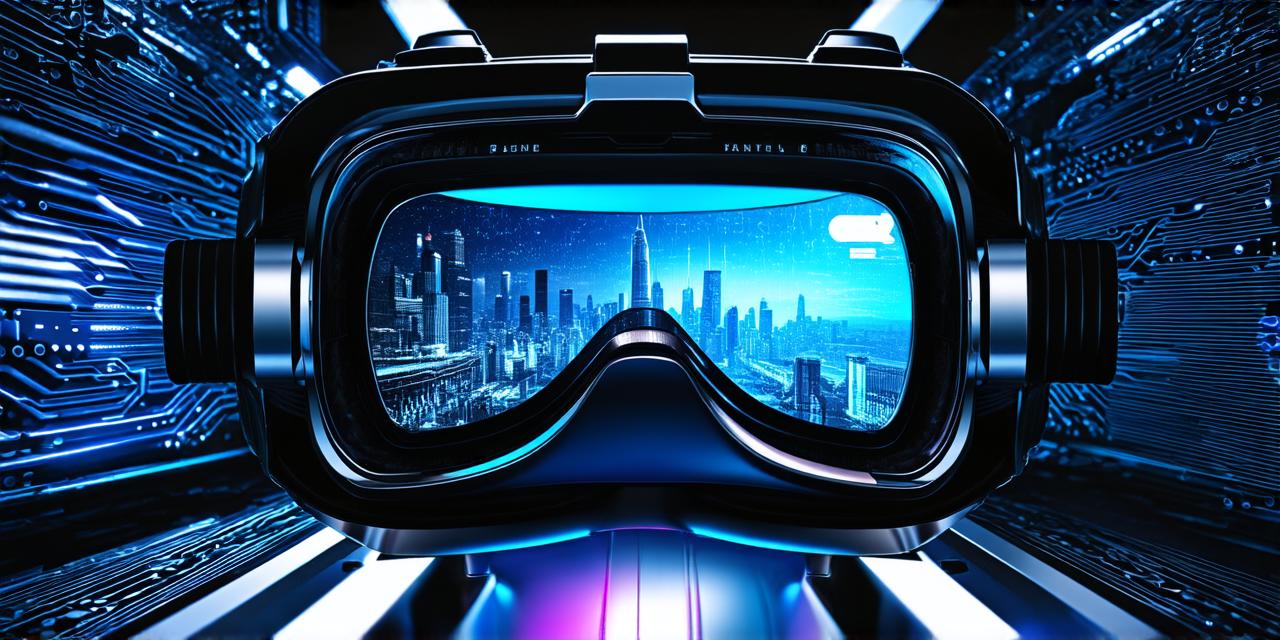Virtual reality (VR) is an increasingly popular technology that allows users to experience immersive environments in a way that feels real. For VR developers, capturing high-quality footage is crucial for creating engaging and realistic experiences. In this comprehensive guide, we will explore the various methods and techniques used to capture virtual reality footage, including camera choices, lighting setups, and post-production workflows.
Camera Choices: Selecting the Right Camera for Your VR Project
The first step in capturing virtual reality footage is selecting the right camera. There are several types of cameras available, each with its own strengths and weaknesses. The most common camera choices for VR include:
- 360-degree cameras: These cameras capture a full 360 degrees of view around them, allowing developers to stitch together footage into a seamless virtual environment. Some popular 360-degree cameras include the Oculus Go, Samsung Gear 360, and Google Street View Trisect.
- DSLR cameras: These cameras offer high image quality and are often used in professional VR productions. However, they can be more difficult to work with than other camera options, as they require a separate rig for capturing 360-degree footage. Some popular DSLR cameras used in VR include the Canon EOS R5, Sony A7 III, and Nikon Z9.
- Smartphones: Many modern smartphones now come equipped with high-resolution sensors and powerful processors that can capture 360-degree video. This makes them a convenient option for smaller VR projects or quick prototypes. However, the quality of footage captured by smartphones may not be as high as other camera options.
When selecting a camera, it’s important to consider factors such as resolution, frame rate, and field of view. Higher-resolution cameras will produce better-quality footage, while faster frame rates can help create smoother movements in VR environments. A wider field of view can also make it easier to capture more of the environment around you, but may result in distorted or blurry edges.
Lighting Setups: Creating the Perfect Atmosphere for Your VR Project
Once you’ve selected your camera, the next step is to set up the lighting for your VR project. Lighting can have a huge impact on the look and feel of your virtual environment, so it’s important to take the time to get it right. Some common lighting setups used in VR include:
- Natural light: If you’re capturing footage outdoors, natural light can create a beautiful, organic atmosphere. However, this option may not be available for all VR projects, and natural light can also be affected by weather conditions or time of day.
- Artificial light: There are many different types of artificial lights that can be used in VR, including LED lights, fluorescent lights, and even lasers. These lights can help create specific moods or effects in your virtual environment, such as a dark and ominous atmosphere or a bright and colorful environment.
- Reflection: Reflecting light can also be used to add depth and dimension to your VR project. For example, using mirrors or reflective surfaces can help create the illusion of depth and distance in your virtual environment.
When setting up lighting for your VR project, it’s important to consider factors such as color temperature, intensity, and direction. A warm color temperature can create a cozy and inviting atmosphere, while cooler temperatures can be used to create a more dramatic or futuristic look. The intensity of the light can also affect the mood of your virtual environment, with brighter lights creating a more energetic atmosphere and dimmer lights creating a more intimate or mysterious atmosphere.
Post-Production Workflow: Enhancing Your VR Footage in Post-Production
Once you’ve captured your VR footage and set up the lighting, it’s time to move on to post-production. This involves editing and refining your footage to create a polished final product. Some common post-production techniques used in VR include:
- Stitching together footage: This involves combining multiple 360-degree frames into a single, seamless image. This can help create the illusion of depth and movement in your virtual environment.
- Adding special effects: Special effects such as particle effects, lighting effects, and camera movements can be used to enhance the look and feel of your VR project. However, it’s important to use these effects sparingly, as too much can become overwhelming or distracting for the viewer.
- Sound design: Adding sound effects, music, and voiceovers can help create a more immersive and engaging experience for the viewer.
When working on post-production for your VR project
